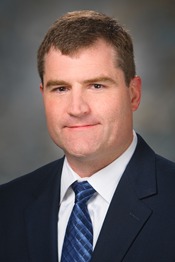Program Information
Homogenization of CT Images for Radiomics Studies: It's Like Butter(worth)
D Mackin*, L Court , C Ng , J Yang , L Zhang , X Fave , UT MD Anderson Cancer Center, Houston, TX
Presentations
SU-F-R-9 (Sunday, July 31, 2016) 3:00 PM - 6:00 PM Room: Exhibit Hall
Purpose: Previous studies have shown that differences in the CT image acquisition parameters produce variability in extracted quantitative image features. The purpose of our study was to determine if the variability due to inconsistencies in the reconstruction field of view (FOV), or pixel size, can be reduced by image filtering.
Methods: We reconstructed the CT scans of 8 NSCLC patients 5 times, varying the FOV from 30 to 50 cm. We then calculated 150 radiomics features for each of the 40 CT image sets using 6 preprocessing methods. The preprocessing methods included re-sampling the images to a consistent 1 mm per pixel and Butterworth filters with cutoff frequencies from 75 to 200. We next calculated the overall concordance correlation coefficient (OCCC) for each feature to assess the intra-patient variability due to multiple FOVs relative to the inter-patient variability. To further explore how image preprocessing can reduce the effects of the reconstruction FOV, we performed hierarchical clustering.
Results: 99% of all features had an OCCC of greater than 0.95 for images resampled and processed with a Butterworth filter with cutoff frequency 125, compared to only 21% of the features calculated without image preprocessing. Filtered images had consistently larger OCCC values except for shape related features which had all OCCC values > 0.95 regardless of the image preprocessing. Without filtering, hierarchical clustering was able to correctly group the 5 FOV scans for only 2 of the 8 patients. For images resample and processed with a Butterworth filter with cutoff frequency 125, the hierarchical clustering correctly grouped the 5 FOV scans for all 8 patients.
Conclusion: Radiomics features, especially those that relate the image intensity and spatial information, show a strong dependence on the reconstruction FOV. However, our results demonstrate that resampling and filtering the images can greatly reduce this dependence.
Contact Email:

